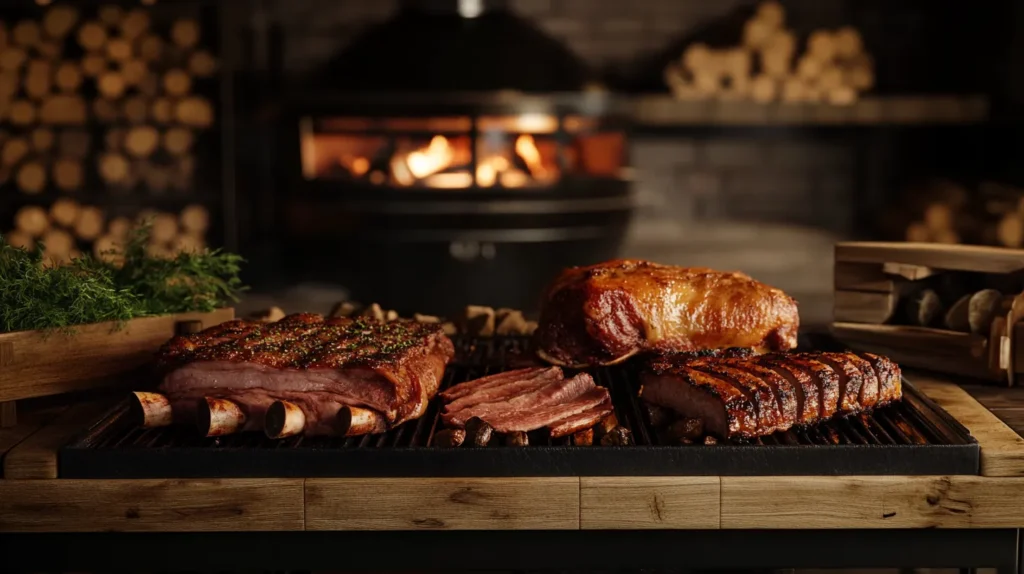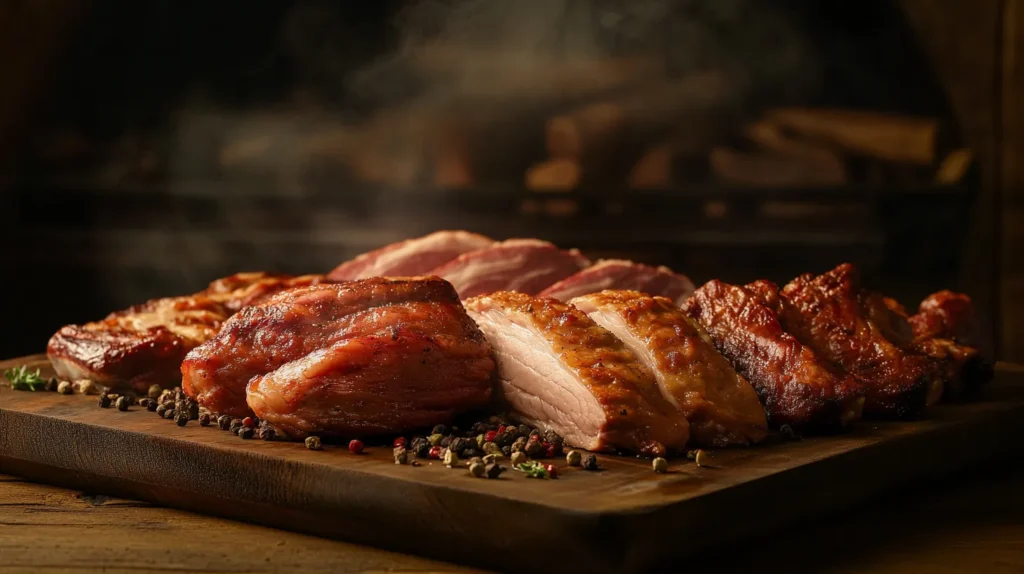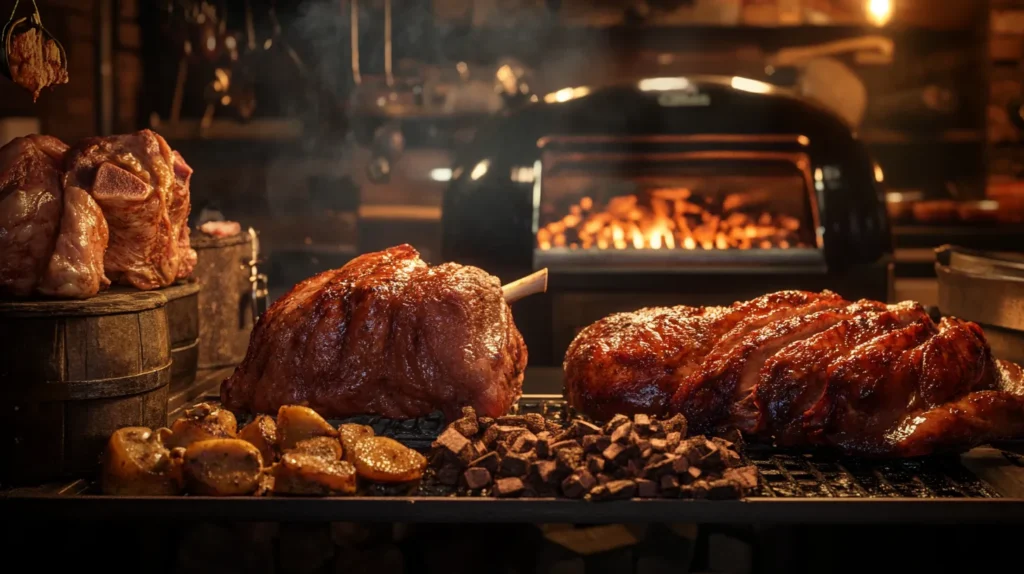
If you’re new to the world of smoked meats, the Beginner Smoker Meat Guide is the perfect resource to help you master the art of smoking. Choosing the right meats, understanding smoking techniques, and avoiding common mistakes can make your experience more enjoyable and successful., choosing the right cuts can make a huge difference in your cooking experience. The Beginner Smoker Meat Guide is here to help you understand what meats to start with, the best smoking techniques, and common mistakes to avoid. Smoking meat is a traditional cooking method that enhances flavors, making the final dish tender and juicy.
The type of smoker and wood chips you use significantly impacts the taste of your meat. Whether you opt for an electric smoker, charcoal smoker, or pellet smoker, understanding the basics will help you master the art of smoking. This guide explores the best meats for beginners, smoking techniques, and common mistakes to avoid to ensure a flavorful experience. If you’re ready to start your smoking journey, this detailed guide will walk you through everything you need to know!
Smoking Meat Forums offers a great community where beginners can find recommendations on the best smokers and techniques. Additionally, you can check out Grilla Grills’ list of meats that are easiest to smoke for beginners.
Table of Contents

Beginner Smoker Meat Guide: Best Meats for Beginner Smokers
Selecting the Best Meats for Beginner Smokers
Choosing the right beginner-friendly meats is an essential step toward mastering the art of smoking. Some cuts of meat are more forgiving and absorb smoke flavor exceptionally well, making them perfect for first-time smokers. The meats listed below are known for their ability to withstand longer smoking times without drying out, giving you a delicious and satisfying final product.
Smoking meat requires patience, the right wood selection, and proper temperature control. Beginners should start with meats that have a higher fat content, as this helps keep them moist during the long cooking process. Whether you’re aiming for juicy pork, flavorful poultry, or rich beef, the following selections will set you up for success.
1. Pork Shoulder (Pork Butt) – A Beginner Smoker’s Favorite
One of the most popular meats for beginners, pork shoulder (also known as pork butt) is incredibly forgiving due to its high fat and connective tissue content. It can handle extended smoking times while remaining juicy and flavorful.
Why It’s Great:
- Naturally fatty, which keeps the meat moist.
- Easy to season with dry rubs or marinades.
- Shreds effortlessly after cooking, making it perfect for pulled pork.
- Absorbs smoky flavors well without overpowering the taste.
Smoking Guidelines:
- Ideal Temperature: 225-250°F.
- Wood Pairing: Hickory, applewood, or cherrywood.
- Cooking Time: 8-12 hours for a full pork shoulder, depending on size.
Pro Tip:
For extra flavor, apply a generous layer of dry rub at least an hour before smoking, or even overnight. Let the meat rest after smoking to allow juices to redistribute, enhancing tenderness and flavor.
2. Whole Chicken – A Quick and Flavorful Choice
For beginners looking for a quicker smoking option, a whole chicken is an excellent choice. Unlike pork or beef, poultry has a shorter cooking time but still delivers rich, smoky flavors.
Why It’s Great:
- Faster smoking time compared to larger meats.
- Skin crisps beautifully when smoked at slightly higher temperatures.
- Versatile—pairs well with many seasoning blends and wood types.
- A cost-effective choice for smoking practice.
Smoking Guidelines:
- Ideal Temperature: 250-275°F.
- Wood Pairing: Applewood, cherry, or pecan for a mildly sweet flavor.
- Cooking Time: 2.5-4 hours, depending on the size of the bird.
Pro Tip:
Brining the chicken for 12-24 hours before smoking helps retain moisture and enhances juiciness. For a crispy skin, increase the smoker temperature to 300°F during the last 30 minutes of cooking.
3. Beef Brisket – A Classic for Smoking Enthusiasts
Smoking a beef brisket is often considered a rite of passage for BBQ lovers. While it requires patience, the result is a melt-in-your-mouth, deeply flavorful cut of meat that pairs well with various wood flavors.
Why It’s Great:
- Rich, deep beef flavor that complements smoke beautifully.
- Develops a flavorful bark (crust) when properly seasoned and smoked.
- Tenderizes over long cooking times due to the breakdown of connective tissues.
- Ideal for slicing or making burnt ends.
Smoking Guidelines:
- Ideal Temperature: 225°F for low-and-slow cooking.
- Wood Pairing: Oak, hickory, or mesquite for a robust smoky flavor.
- Cooking Time: 10-16 hours, depending on the brisket’s weight.
Pro Tip:
To prevent the brisket from drying out, wrap it in butcher paper halfway through the cook. This method helps retain moisture while still allowing smoke to penetrate the meat, resulting in a perfect balance of tenderness and flavor.

Recommended Wood Types for Beginner Smoker Meat Guide
Selecting the right wood for smoking is just as important as choosing the right meat. Different woods impart distinct flavors, enhancing the taste of your smoked meats. Here are some of the best options for beginners and how they pair with various meats:
1. Applewood – Mild and Slightly Sweet
Applewood produces a subtle, sweet smokiness that complements poultry and pork exceptionally well. It’s an excellent choice for beginners because it doesn’t overpower the natural flavors of the meat.
Best for: Chicken, turkey, pork ribs, and pork shoulder.
2. Hickory – Strong, Smoky, and Traditional
Hickory is one of the most popular smoking woods, known for its bold and hearty flavor. It pairs well with pork and ribs, creating that classic BBQ taste many people love.
Best for: Pork shoulder, ribs, and beef brisket.
3. Mesquite – Bold, Earthy, and Intense
Mesquite has an extremely strong smoky flavor, making it ideal for meats that can handle its robust taste. However, it’s best used in moderation or blended with milder woods to avoid bitterness.
Best for: Beef brisket, venison, and lamb.
4. Cherrywood – Lightly Fruity and Mild
Cherrywood adds a touch of sweetness and pairs particularly well with poultry and lighter meats. It also enhances the color of smoked meats, giving them a rich, mahogany hue.
Best for: Chicken, turkey, pork loin, and duck.
5. Oak – Medium Smoky Flavor and Versatile
Oak provides a balanced smoky taste that isn’t too strong or too mild, making it a great all-purpose wood. It works well with almost any meat and burns consistently over long smoking sessions.
Best for: Beef brisket, pork butt, ribs, and sausages.
Blending Wood for Unique Flavors
Mixing different woods can help create a more complex and balanced flavor profile. Some great beginner-friendly combinations include:
- Applewood + Hickory: A mix of sweet and smoky flavors for pork and poultry.
- Oak + Cherrywood: A mild, slightly fruity taste that complements red meats.
- Mesquite + Applewood: A blend that balances mesquite’s boldness with a hint of sweetness.
Using the right wood ensures your smoked meats have a deep, satisfying flavor without overwhelming the natural taste of the ingredients.t woods can create a balanced, complex flavor profile for your smoked meats.
Basic Smoking Techniques for Beginner Smoker Meat Guide
Mastering the fundamental techniques of smoking is key to achieving flavorful, tender, and perfectly cooked meats. Here are essential methods that every beginner smoker should follow:
1. Temperature Control
Maintaining a consistent temperature is crucial when smoking meats. Unlike grilling, where high heat is often used, smoking requires a steady low-and-slow heat. Aim for temperatures between 225°F and 275°F, depending on the type of meat.
- Use a smoker thermometer to monitor the internal temperature of both the smoker and the meat.
- Adjust vents and dampers to regulate airflow, which helps control heat and smoke levels.
- Avoid frequent lid openings, as heat escapes and fluctuates when the smoker is opened too often.
2. Using Water Pans
A water pan inside the smoker helps maintain moisture levels, preventing meats from drying out. This is especially useful when smoking for long hours.
- Place a heat-resistant water pan under the grill grates to stabilize humidity.
- Adding water, apple juice, or broth to the pan can enhance flavor and keep meats juicy.
- Refill the water pan as needed to ensure continuous moisture throughout the smoking process.
3. Using a Meat Thermometer
A reliable meat thermometer is essential for ensuring the perfect doneness of smoked meats. Each type of meat has an optimal internal temperature for safety and tenderness:
- Pork shoulder: 195-205°F for perfect pulled pork.
- Chicken: 165°F to ensure safety while keeping it juicy.
- Beef brisket: 200-205°F for tender slices.
Using a thermometer removes the guesswork and ensures that meats are smoked to perfection.
4. Prepping the Meat
Proper preparation before smoking significantly impacts the final flavor and texture of the meat.
- Trimming excess fat: While fat helps keep the meat moist, too much can prevent smoke penetration. Trim excess fat while leaving a thin layer to maintain juiciness.
- Applying dry rubs or marinades: Season meats generously with a spice rub or marinade. Allow it to sit for at least a few hours or overnight for deeper flavor absorption.
- Brining poultry: For chicken and turkey, brining before smoking helps retain moisture and enhances taste.
5. Resting the Meat
One of the most overlooked but essential steps in smoking is resting the meat before slicing or serving.
- Rest meats for at least 20-30 minutes after smoking to allow juices to redistribute, preventing dryness.
- Wrap the meat in foil or butcher paper to retain heat while resting.
- This step enhances tenderness, making each bite juicy and flavorful.
Mastering these basic techniques will ensure that your smoked meats are flavorful, tender, and cooked to perfection. Whether you’re smoking pork, chicken, or beef, following these fundamentals will significantly enhance your results.
Common Mistakes to Avoid When Smoking Meat
Avoiding these common errors will help ensure a successful smoking experience and enhance the quality of your smoked meats.
1. Opening the Smoker Too Often
Constantly opening the smoker to check on the meat causes temperature fluctuations, which can affect cooking times and consistency.
- Keep the smoker closed as much as possible to maintain steady heat and smoke levels.
- Use a remote thermometer to monitor temperatures without opening the lid frequently.
2. Over-smoking the Meat
Too much smoke can overpower the natural flavors of the meat, making it taste bitter rather than enhancing its taste.
- Use a moderate amount of wood chips or chunks; a steady stream of light blue smoke is ideal.
- Avoid excessive wood additions—start with a small amount and add more gradually.
3. Skipping the Resting Period
Cutting into smoked meat immediately after cooking allows the juices to escape, leaving the meat dry and less flavorful.
- Always rest meats for at least 20-30 minutes before slicing to lock in juices.
- Wrap meat in foil or butcher paper to keep it warm during resting.
4. Using Wet Wood Chips
Soaking wood chips may seem like a good idea, but it produces inconsistent smoke and can lead to temperature fluctuations.
- Instead of soaking, use dry wood chips or chunks to achieve a clean and even smoke.
- If you want a milder smoke flavor, adjust the quantity of wood used rather than soaking it.
5. Not Controlling Airflow Properly
Proper airflow is crucial for maintaining steady heat and producing the right amount of smoke.
- Adjust smoker vents and dampers to ensure adequate oxygen flow and consistent combustion.
- Avoid completely closing vents, as this can lead to smoldering and unpleasant-tasting smoke.
Avoiding these mistakes will help you achieve delicious, flavorful, and perfectly smoked meats. By following the right techniques and learning from common errors, you’ll develop confidence and skill in your smoking journey.

FAQs – Beginner Smoker Meat Guide
What is the easiest meat to smoke for a beginner?
Pork shoulder and whole chicken are the easiest meats to smoke because of their high-fat content and short cooking times.
Do I need to marinate meat before smoking?
Marinating is optional, but applying a dry rub at least an hour before smoking enhances flavor.
Can I use any type of wood for smoking?
Different woods impart different flavors. Choose woods based on the meat type for the best results.
How do I maintain the temperature in my smoker?
Use a reliable thermometer and avoid opening the smoker frequently to maintain a consistent temperature.
Conclusion – Start Your Smoking Journey Today!
Starting your smoking journey with the Beginner Smoker Meat Guide will ensure you achieve flavorful results every time. Patience and practice are key, and by experimenting with different woods, rubs, and cooking temperatures, you’ll develop your own unique smoking style. with the right meats and techniques will ensure a flavorful experience. Remember, patience and practice make perfect. Experiment with different woods, rubs, and cooking temperatures to find what works best for you. Check out beginner smoker recipes for additional guidance and inspiration. Whether you’re cooking for friends, family, or just yourself, the Beginner Smoker Meat Guide is here to help you master the art of smoking meat.
